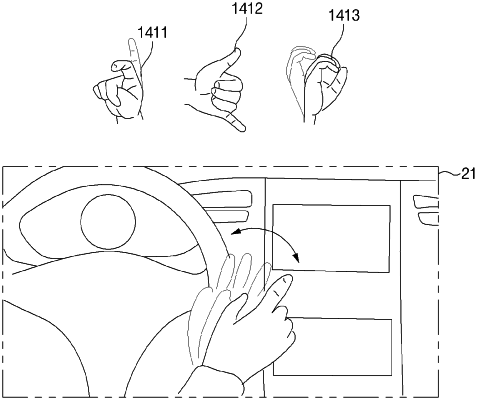| CPC G06V 40/20 (2022.01) [G06F 3/015 (2013.01); G06F 3/017 (2013.01); G06F 18/213 (2023.01); G06F 18/241 (2023.01); G06V 10/803 (2022.01); H02M 1/143 (2013.01)] | 17 Claims |

|
1. An electronic device comprising:
a housing;
a display disposed in at least a portion of the housing;
a sensor unit including a first sensor and a second sensor; and
a processor operatively connected with the sensor unit,
wherein the processor is configured to:
determine whether to change a screen of the display from an off state to an on state, by using a first sensor signal of a user sensed by the first sensor;
while the screen of the display maintains the off state, control the first sensor to sense the first sensor signal at a first cycle and control the second sensor to sense a second sensor signal from the user at a second cycle longer than the first cycle of the first sensor;
in response to identifying that the screen of the display changes to the on state, control the second sensor to sense the second sensor signal at a third cycle shorter than the second cycle;
identify a start point of a gesture signal interval for the first sensor signal and a start point of a gesture signal interval for the second sensor signal, wherein the start point of the gesture signal interval for the first sensor signal is different from the start point of the gesture signal interval for the second sensor signal;
synchronize the first sensor signal and the second sensor signal temporally in a manner that start points of gesture signal intervals respectively included in the first sensor signal and the second sensor signal are identical;
sense a pose of the user by using at least one of the first sensor signal and the second sensor signal;
detect correction-required signal intervals respectively included in the first sensor signal and the second sensor signal based on amplitudes of the first sensor signal and the second sensor signal, depending on the sensed pose of the user; and
exclude the correction-required signal intervals respectively detected in the first sensor signal and the second sensor signal from a gesture recognition target; and
recognize a gesture of the user by using the first sensor signal sensed every first cycle and the second sensor signal sensed every third cycle.
|